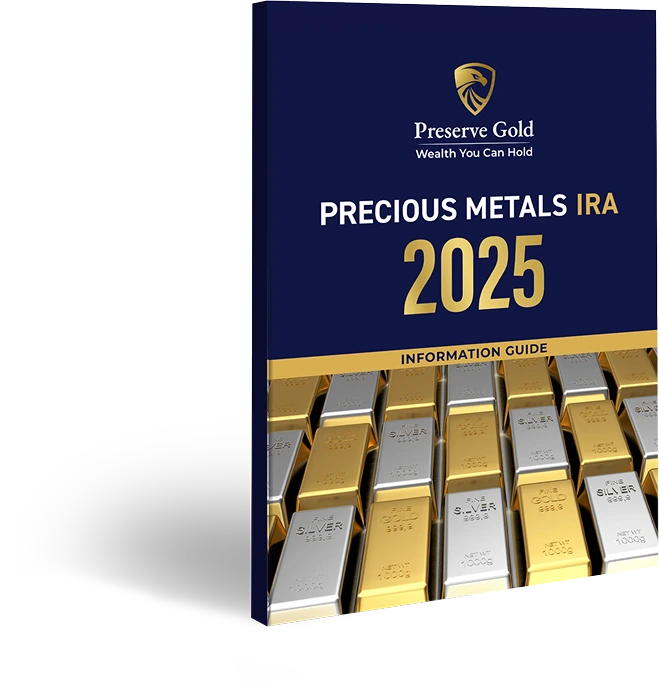As noted by T. Rowe Price, an individual retirement account (IRA) provides employees with an investment plan as they prepare for retirement. As an essential retirement account, an IRA also offers investors beneficial tax advantages. An IRA can be a sound savings tool for individuals who are self-employed or do not have the benefit of investing in a 401(k) from their employer.
About Gold IRAs and Traditional IRAs
Gold IRAs differ from traditional IRAs in several ways. A key distinction is that gold IRAs are self-directed IRAs (SDIRAs) that allow investors to acquire physical gold and other precious metals as part of their retirement assets. Once a gold IRA is selected, the investor’s gold is securely stored in the custody of a trusted precious metals depository. It’s important to understand that, like traditional IRAs, gold IRAs do not grow wealth as fast as stocks and bonds; however, in times of economic upheaval, gold can serve as a hedge against inflation.
On the other hand, as noted by Vanguard, a traditional IRA helps individuals get ready for their retirement years through a tax-advantaged account. Traditional and gold IRAs play important roles in the diversification of retirement portfolios. They include tangible (precious metals) and intangible (paper assets) investments to help protect individuals during market uncertainties. The following table provides a snapshot of key differences between gold and traditional IRAs.
| Feature | Gold IRA | Traditional IRA |
| Investment assets | Physical gold, silver, and other precious metals | Stocks, bonds, mutual funds, ETFs, and other paper assets |
| Control | Self-directed (investor makes investment decisions) | Typically managed by a broker or financial institution |
| Risk exposure | Subject to market fluctuations in precious metals prices | Subject to market volatility in financial markets |
| Tax treatment | Tax-deferred growth: taxes paid upon withdrawal | Tax-deferred growth: taxes paid upon withdrawal |
| Liquidity | Less liquid due to the physical nature of assets | Generally more liquid: easier to buy and sell assets |
| Storage Requirements | Requires secure storage and insurance for physical metals | No special storage requirements |
| Fees | Potentially higher due to storage and insurance costs | Typically lower: standard account maintenance fees |
| Regulations | Subject to specific IRS rules for precious metals IRAs | Standard IRS regulations for retirement accounts |
Gold IRAs vs. Traditional IRAs: Key Differences
Let’s explore the critical distinctions and consider the advantages and disadvantages between gold and traditional IRAs:
Gold IRAs
A gold IRA is fully controlled by the investor as a self-directed investment option. Following the implementation of the Taxpayer Relief Act of 1997, individuals were allowed to invest in physical gold and other precious metals as part of their retirement portfolios. However, this Act does include specific guidelines. First, the IRS only permits metals with a specific purity content to be included in a precious metals IRA, and collectibles are not allowed. Next, these metals (bullion, coins, bars, and rounds only) must be managed and stored by an IRS-approved custodian in an IRS-approved depository.
Traditional IRAs
As noted by Charles Schwab, a traditional IRA is generally controlled by a broker or financial institution and consists of paper assets such as bonds, CDs, ETFs, mutual funds, and stocks. According to J.P. Morgan Wealth Management, when selecting a traditional IRA as an investment option, an individual can save for retirement by deferring taxes on investment gains. It’s also critical for investors to understand traditional IRA contribution limits. After-tax money is typically used to make contributions, but these funds may be tax deductible under certain income eligibility circumstances.
Additional Differences
Here are a few more differences to consider between gold and traditional IRAs:
Risk Factors: Both gold and traditional IRAs carry similar risk factors. Investopedia points out that gold IRAs can be risky because they are subject to market fluctuations in precious metal prices. Likewise, while traditional IRAs consist of multiple investment options, depending on the type of investment vehicle an individual chooses, they can also come with risks.
Tax Treatment: When considering tax-deferred growth, in both gold and traditional IRAs, taxes are paid upon withdrawal. While a gold IRA is subject to specific precious metals tax rules, traditional IRAs are subject to standard retirement account regulations.
Liquidity: Forbes advises that because gold IRAs are physical assets, they are less liquid and more difficult to convert into cash. On the other hand, traditional IRAs are generally more liquid and offer asset choices that are easier to buy and sell.
Storage Requirements: Another key difference between gold IRAs and traditional IRAs is the storage method. As a physical asset, gold IRAs require secure storage, which means potentially higher fees and insurance costs. Because traditional IRAs are paper assets, they generally require less account maintenance, and there are no special storage requirements.
Investing in Precious Metals With a Gold IRA

The benefit of investing in precious metals is that this investment choice provides a tangible asset that can protect an investor’s retirement funds because physical gold is less susceptible than paper assets to market fluctuations, making it an important component of retirement portfolio diversification. Nevertheless, it’s critical for us to note that while gold is often viewed as a safe haven, it should only be considered as one part of a diversified portfolio. Holding various types of assets is a solid way to secure your investments. There are several types of eligible accounts investors can utilize to diversify their retirement portfolios, including the following:
- Traditional IRA
- Roth IRA
- Traditional 401(k)
- Roth 401(k)
- Thrift Savings Plan (TSP)
- 403(b)
- 457(b)
- Simplified Employee Pension (SEP)
- Savings Incentive Match Plan for Employees of Small Employers (SIMPLE)
- Tax-Sheltered Annuity (TSA)
How Preserve Gold Supports Precious Metals Investors
If you’re interested in setting up a gold IRA account, Preserve Gold can facilitate the process by assisting you in selecting qualified precious metals and providing you with guidance to ensure compliance with IRS regulations. We work with various custodial partners to serve your needs. Our qualified providers are vetted by the precious metals industry and provide customer service for each client who chooses to do business with us. In addition, we offer secure storage at the following depositories:
- Delaware Depository
- Texas Precious Metals Depository
- International Depository Services
Why Invest With Preserve Gold?

At Preserve Gold, we pride ourselves on setting a gold standard in client support. As one of North America’s top precious metal firms, we’ve gained a reputation for being honest, ethical, and committed to our clients. Our robust online reviews demonstrate our commitment to customer care and support. We’ve also been verified by industry leaders such as Trustindex, Google, ConsumerAffaris, Trustpilot, Retirement Living, and the Better Business Bureau.
We view precious metals investment as a benefit that everyone should be able to take advantage of, and we’re primed to help support you through this process. We hope the information we’ve provided has helped you learn more about a gold IRA vs. a traditional IRA.
We’ve compiled a guide to help you learn more about how precious metals can protect your wealth and help secure your future. Request your free guide or call us at (877) 444-0923 to learn more.







